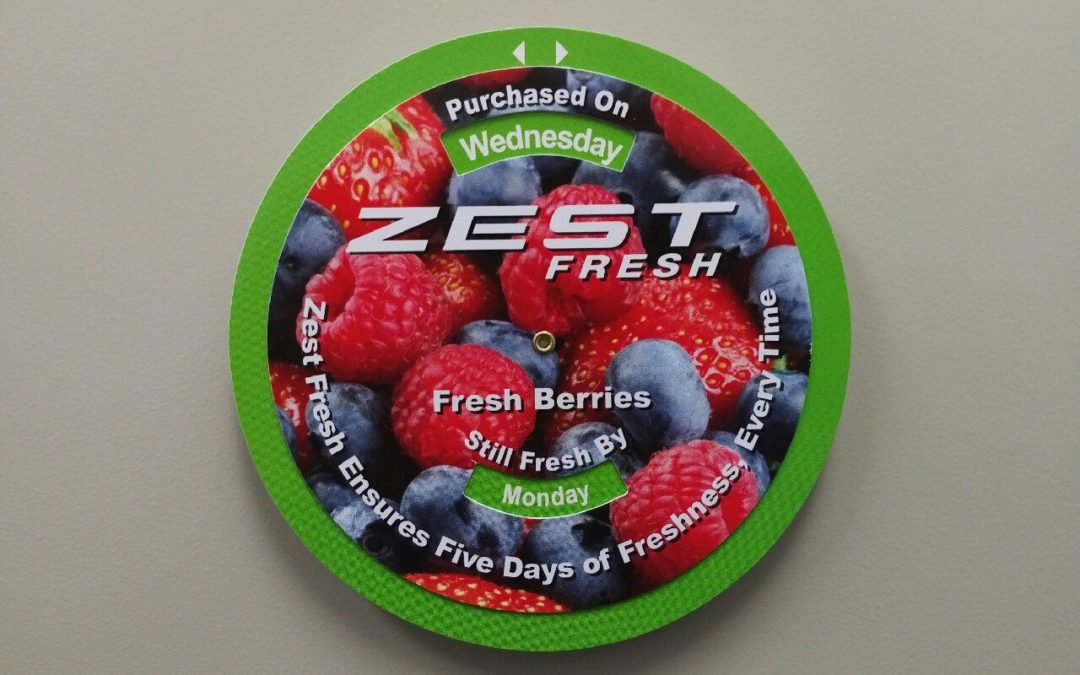Shelf-life variability is something that you may experience every week but never think about. Look at it this way: How long do you expect your fresh produce to remain “fresh” after it’s purchased and brought home? Before joining Zest Labs, this question never really crossed my mind. I just expected it wouldn’t spoil before I consumed it.
Chances are your grocer has a target amount of time for how long you should be able to store the produce you bought before it spoils or goes bad. After all, they want to be able to keep your business and selling produce that spoils prematurely is a quick way to lose it.
We think that most grocery stores aim to provide you with at least five days of freshness for produce like berries and longer for things like iceberg lettuce (more than a week).
A Shelf-life Variability Homework Assignment – Yes, You Can Try This at Home
Pick something you buy every week (for me, this would be a clam shell of strawberries or a head of iceberg lettuce), note the day you buy it and how many days you have to consume it before it spoils.
This can easily be done on a piece of paper or with one of our Zest Fresh “Freshness Dials,” which tells you how long produce should last if it’s properly handled and stored. (Email me if you’d like one!)
This exercise is particularly interesting if you shop at more than one store so as to compare the stores for consistency of the freshness of their respective produce.
Not All Grocers and Suppliers are the Same
I did such an experiment this month. Normally, I shop at the same store every Saturday and buy a one-pound clam shell of strawberries. If bought on Saturday, I know that they should last five days and, therefore, still be fine on Thursday. However, sometimes, they start to visibly “fade” by Tuesday and, by Wednesday, they’ve turned to mush. Once I had berries turn to mush on Monday, only two days after I purchased them. I would say, on average, I get about three to four days of shelf-life for strawberries I purchase from that store. (I’ve also noticed that one brand of berries seems to perform better than another brand but, as to the identity of the brands, I’ll keep that to myself.)
For comparison, I visited a different store and bought a clam shell of strawberries to get me through the week. Five days from the day they were purchased, I opened the refrigerator and the strawberries were fine!
Five day of freshness! And the experiment continues.
But Why the Shelf-life Variability?
Why can’t we be sure our grocery-bought berries or leafy greens will stay fresh until fully consumed?
Shelf-life variability exists because of:
- A false assumption that all produce picked in the same field on the same day will have the same shelf-life.
- Numerous variables impacting shelf-life, including cut-to-cool time and pre-cool efficiency. If pallets wait in the field or sit on a truck, they’re losing shelf-life. For example, two pallets from the same field on the same day can have dynamic remaining shelf-lives that vary significantly by several days or more.
This is why we recommend managing produce’s freshness pallet-by-pallet from the point of harvest through the supply chain journey. By doing so, we can accurately predict the remaining shelf-life and help ensure all pallets delivered to the grocer have sufficient freshness for sale and for us to enjoy without watching our produce turn to mush.
Get Your Own Freshness Dial
I encourage you to conduct your own experiment! Feel free to email me with your shipping address and we’ll send one of our “Freshness Dials” your way for free. You can choose between two options: Berries and salad kits.
Try it out and let us know at Zest Labs what you discover about your store and brands of produce you’re buying. Learn more about how freshness management works.
If you’re curious, you can also check out the ten types of produce with the longest shelf-life.


